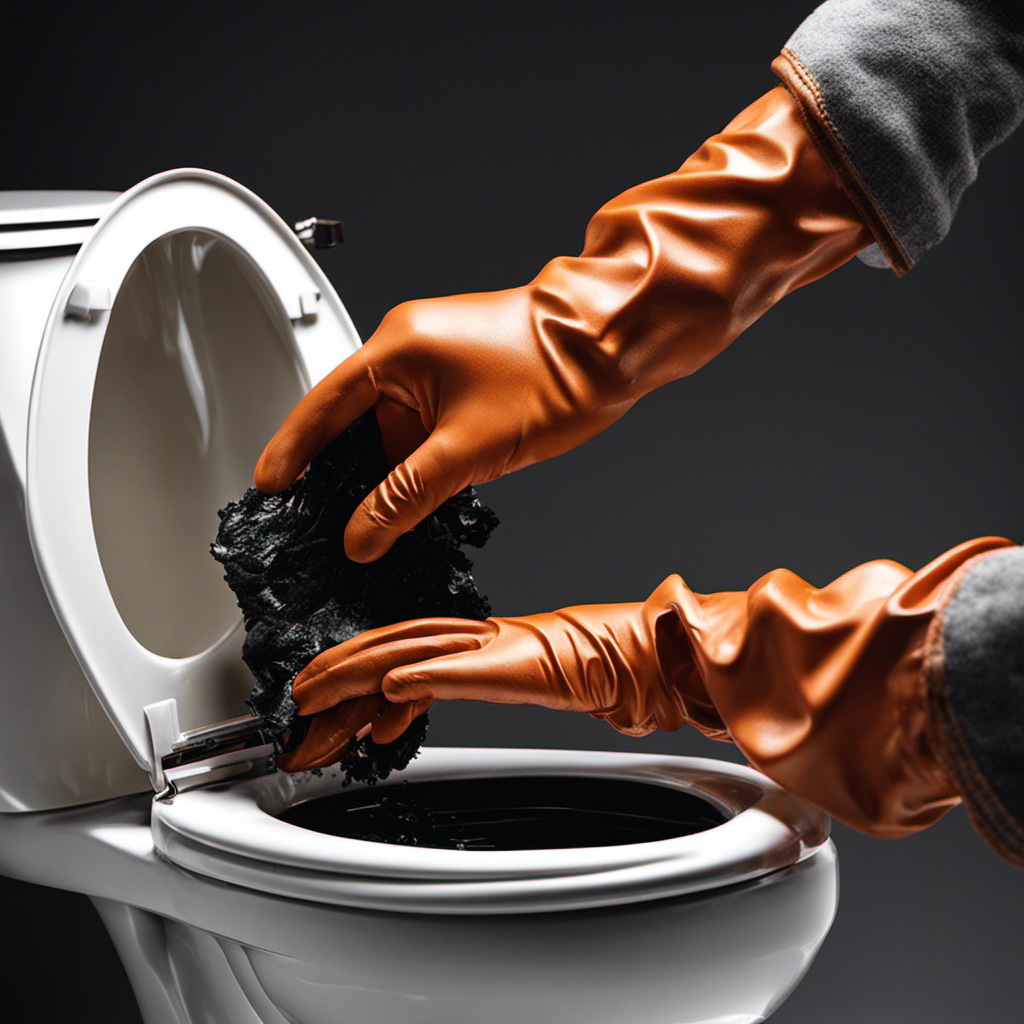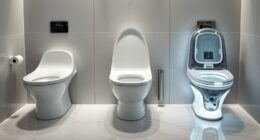Were you aware that around 2.3 billion individuals globally do not have access to adequate sanitation services?
In situations where there is no electricity, knowing how to flush a toilet without it becomes crucial. In this article, we will explore various methods such as the gravity flush, bucket flush, manual flush, using a hand pump, and alternative water sources.
By mastering these techniques, you’ll be equipped to handle any toilet flushing situation, ensuring proper hygiene and sanitation.
Key Takeaways
- Gravity flush toilets rely on the force of gravity to move waste and water out of the toilet bowl, using a siphoning effect created by water rushing from the higher positioned tank into the bowl.
- The bucket flush method is an alternative method for flushing toilets without electricity, where water is poured from a bucket into the toilet bowl with enough force to create a flushing effect.
- The manual flush method involves activating the flushing mechanism by pressing down on the handle and using a plunger technique if the toilet is clogged.
- Using a hand pump is another option for manually pumping water into the toilet’s tank, and regular maintenance is necessary for proper functioning of the hand pump. Additionally, alternative water sources such as rainwater collection and well water can be used for toilet flushing when electric flush systems aren’t feasible.
Gravity Flush Method
To flush a toilet without electricity, we rely on the gravity flush method. This method takes advantage of the force of gravity to move waste and water out of the toilet bowl. Gravity flush toilets have a large siphon trapway and a tank positioned higher than the bowl. When the flush valve is opened, water from the tank rushes into the bowl, creating a siphoning effect that pulls waste and water out through the trapway and into the sewage system.
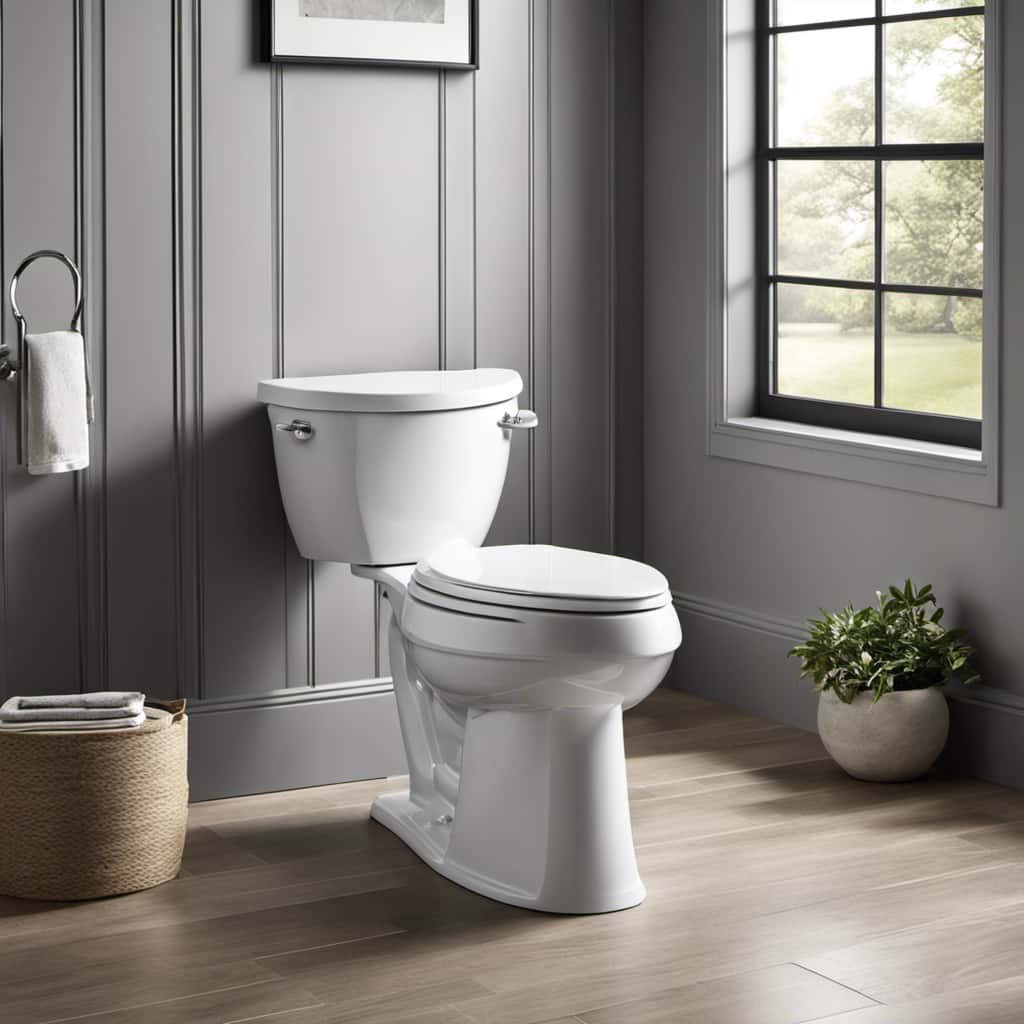
There are several advantages to the gravity flush method. Firstly, it doesn’t require any electrical power, making it reliable even during power outages. Additionally, gravity flush toilets tend to have fewer mechanical parts, reducing the chances of malfunction. However, there are also some disadvantages. The force of gravity alone may not be strong enough to effectively flush large amounts of waste or clogs. Furthermore, gravity flush toilets typically use more water per flush compared to other flushing methods.
Moving on to the subsequent section about the ‘bucket flush method’, we’ll explore an alternative method for flushing toilets without electricity.
Bucket Flush Method
Now let’s delve into the bucket flush method, which offers an alternative solution for flushing toilets without electricity. This method is particularly useful for composting toilets or as a chemical toilet alternative.
To perform a bucket flush, you’ll need a bucket filled with water. Simply pour the water into the toilet bowl with enough force to create a flushing effect. The water will push waste through the plumbing and into the sewer or septic system.

It’s important to note that the bucket should be filled with enough water to effectively flush the waste. Additionally, make sure to pour the water directly into the bowl rather than the tank to avoid any potential damage to the flushing mechanism.
The bucket flush method provides a simple and efficient way to maintain proper sanitation even without access to electricity.
Manual Flush Method
We can manually flush a toilet without electricity by pressing down on the handle to activate the flushing mechanism.
However, if the toilet is clogged and the water won’t go down, a plunger technique can be used. To do this, place the plunger over the drain hole and push down firmly, then pull up quickly to create suction. Repeat this motion several times until the clog is dislodged and the water begins to drain.
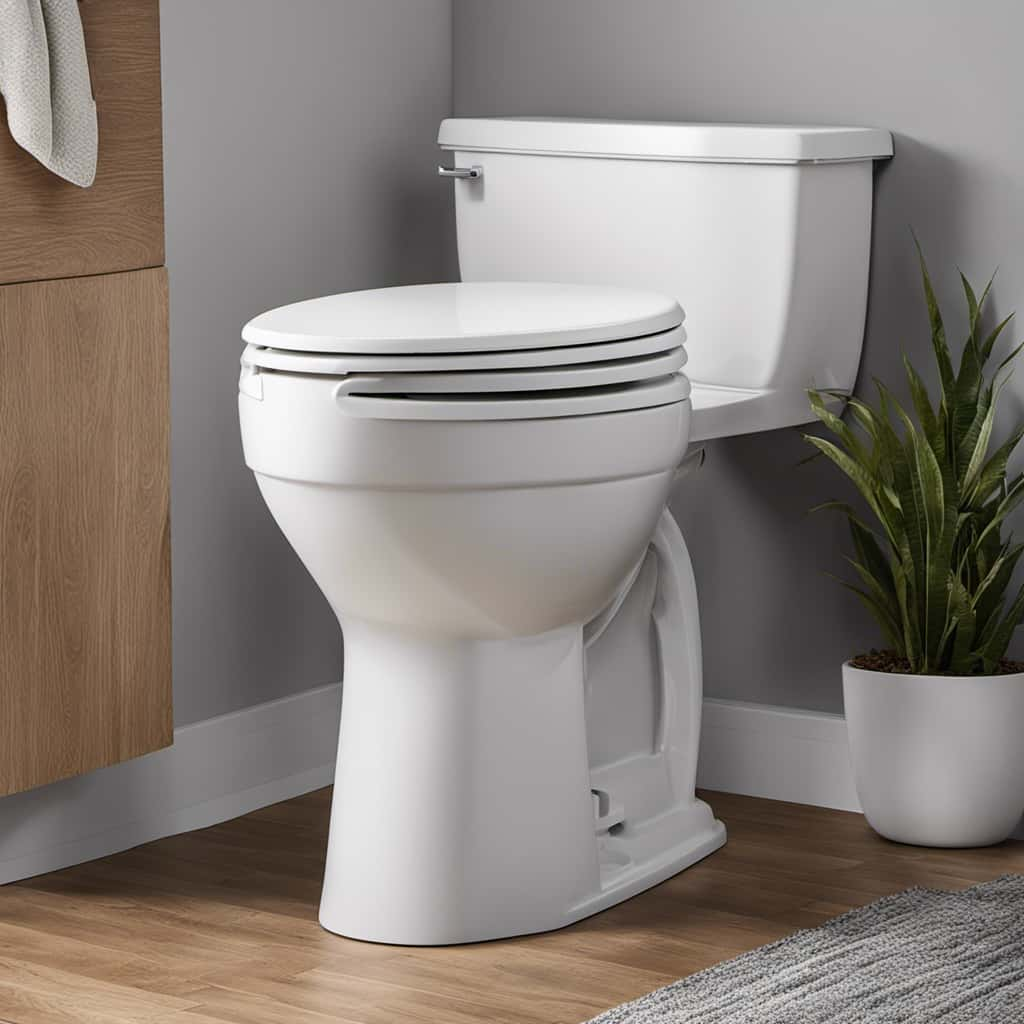
It’s important to note that using water-saving flush methods can also help conserve water, such as using a dual-flush toilet or adjusting the water level in the tank.
Using a Hand Pump
One option to flush a toilet without electricity is by using a hand pump. A hand pump is a mechanical device that allows you to manually pump water into the toilet’s tank, which then flushes the waste away. To ensure the proper functioning of a hand pump, regular maintenance is necessary. This includes checking for any leaks, lubricating moving parts, and cleaning the pump to prevent clogging.
The benefits of using a hand pump are numerous. Firstly, it provides a reliable method of flushing the toilet even during power outages. Additionally, it promotes water conservation as it requires manual effort to pump water. Lastly, hand pump maintenance is relatively simple and can be done without professional assistance.
Moving on to alternative water sources, there are several options available when an electric flush isn’t possible.

Alternative Water Sources
Where can we obtain water when an electric flush isn’t possible?
In situations where electricity is unavailable, alternative water sources such as rainwater collection and well water usage can be utilized.
Rainwater collection involves capturing and storing rainwater for various uses, including toilet flushing. This can be achieved by installing rain barrels or tanks connected to the roof’s gutter system.
Well water, on the other hand, is water obtained from underground sources through wells. It can be accessed using hand pumps or manual well buckets.

Both rainwater collection and well water usage provide sustainable options for obtaining water when electric flush systems aren’t feasible. By harnessing these alternative sources, we can ensure the continued functioning of toilets even in the absence of electricity.
Frequently Asked Questions
Can I Use the Gravity Flush Method in Any Type of Toilet?
Yes, you can use the gravity flush method in any type of toilet. It is compatible and offers several advantages, such as being a manual flush method that does not rely on electricity.
How Much Water Is Typically Needed for a Bucket Flush?
When using alternative water saving methods like the bucket flush, it’s important to consider how much water is needed. By using less water, we can reduce waste and conserve resources, benefiting both the environment and our wallets.
Is the Manual Flush Method Suitable for All Types of Toilets?
The manual flush method may not be suitable for all types of toilets due to potential drawbacks such as inconvenience and limited water flow. However, the benefits of gravity flush, including reliable operation and water conservation, make it a preferred option for many.
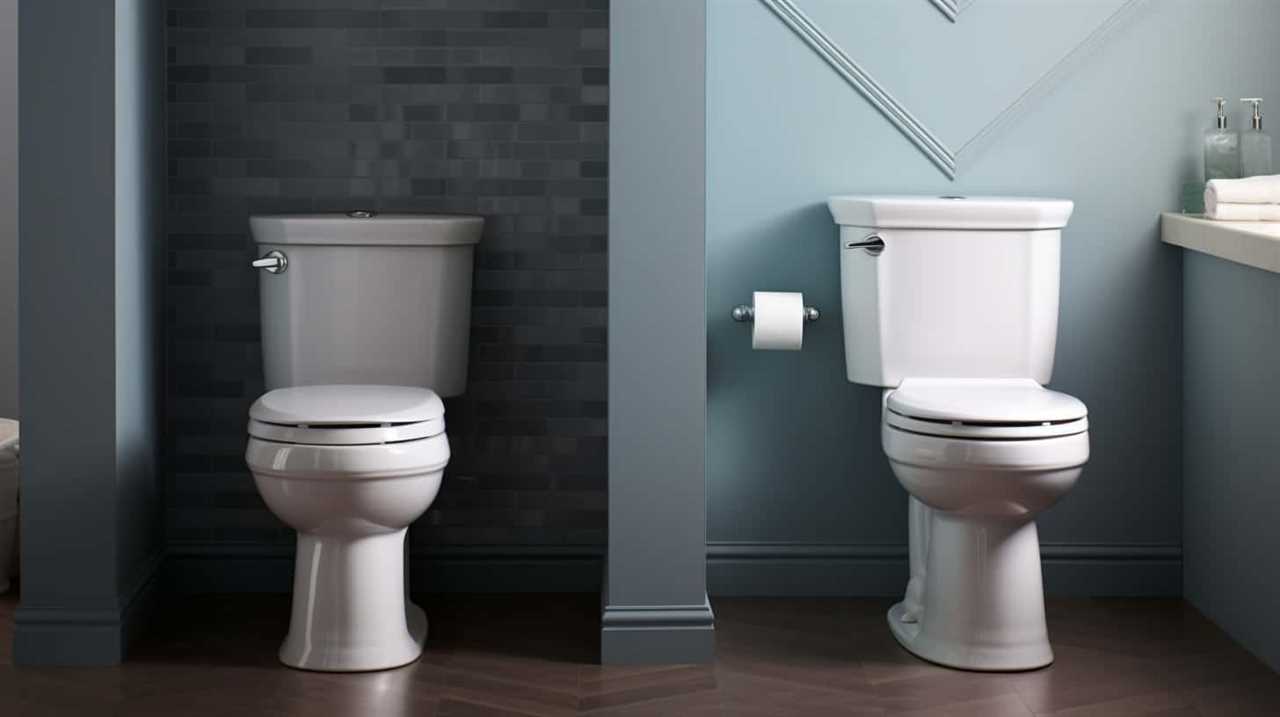
Can I Use a Hand Pump to Flush a Toilet Without Electricity in Any Location?
In any location, a hand pump can efficiently flush a toilet without electricity. It is important to consider the pros and cons of the manual flush method, as it may vary depending on the type of toilet.
What Are Some Alternative Water Sources That Can Be Used for Flushing a Toilet Without Electricity?
Rainwater harvesting and greywater recycling are alternative water sources that can be used for flushing a toilet without electricity. These methods collect and reuse water, reducing the reliance on traditional plumbing systems.
Conclusion
In conclusion, when faced with a lack of electricity, there are several methods to flush a toilet without relying on electrical power. Whether it’s using gravity, a bucket of water, a manual flush, or a hand pump, there are practical solutions available.
Additionally, exploring alternative water sources can be a sustainable way to address this issue. Just like finding alternative solutions to flush a toilet, we can also find creative ways to overcome other challenges in life.







